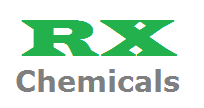
METHACRYLIC ACID FOR SYNTHESIS
METHACRYLIC ACID FOR SYNTHESIS
Methacrylic acid was synthesized from the biobased substrates citric acid, itaconic acid, and 2-hydroxyisobutyric acid (2-HIBA). Hydrotalcite, a solid base catalyst, was employed to form methacrylic acid (MAA) through decarboxylation of itaconic acid and citric acid.
Methacrylic Acid is a colorless liquid with a sharp odor. It is used in making plastic sheets, moldings, fibers, resins, and other organic chemicals. * Methacrylic Acid is on the Hazardous Substance List because it is cited by ACGIH, DOT, NIOSH and NFPA.
Acrylic acid (CAS 79-10-7) is an organic molecule and the simplest of the unsaturated acids. At room temperature, acrylic acid is a liquid and has a characteristic acid and tart aroma. It is corrosive in liquid and vapor forms. Acrylic acid is used mainly in the formation of polymers.




